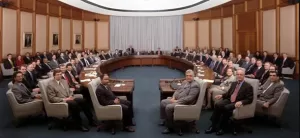In October 2021, the United Nations Development Programme (UNDP) released a report that received barely any attention: the Global Multidimensional Poverty Index 2021, notably subtitled Unmasking disparities by ethnicity, caste, and gender. ‘Multidimensional poverty’ is a much more precise measurement of poverty than the international poverty line of $1.90 per day. It looks at ten indicators divided along three axes: health (nutrition, child mortality), education (years of schooling, school attendance), and standard of living (cooking fuel, sanitation, drinking water, electricity, housing, assets). The team studied multidimensional poverty across 109 countries, looking at the living conditions of 5.9 billion people. They found that 1.3 billion–one in five people–live in multidimensional poverty. The details of their lives are stark:
- Roughly 644 million or half of these people are children under the age of 18.
- Almost 85 per cent of them reside in Sub-Saharan Africa and South Asia.
- One billion of them are exposed to solid cooking fuels (which creates respiratory ailments), inadequate sanitation, and substandard housing.
- 568 million people lack access to proper drinking water within a 30-minute round trip walk.
- 788 million multidimensionally poor people have at least one undernourished person in their home.
- Nearly 66 per cent of them live in households where no one has completed at least six years of schooling.
- 678 million people have no access to electricity.
- 550 million people lack seven of eight assets identified in the study (a radio, television, telephone, computer, animal cart, bicycle, motorcycle, or refrigerator). They also do not own a car.
The absolute numbers in the UNDP report are consistently lower than figures calculated by other researchers. Take their number of those with no access to electricity (678 million), for example. World Bank data shows that in 2019, 90 per cent of the world’s population had access to electricity, which means that 1.2 billion people had none. An important study from 2020 demonstrates that 3.5 billion people lack ‘reasonably reliable access’ to electricity. This is far more than the absolute numbers in the UNDP report, but, regardless of the specific figures, the trend lines are nonetheless horrific. We live on a planet with greatly increasing disparities.
For the first time, the UNDP has focused attention on the more granular aspects of these disparities, shining a light on ethnic, race, and caste hierarchies. Nothing is as wretched as social hierarchies, inheritances of the past that continue to sharply assault human dignity. Looking at the data from 41 countries, the UNDP found that multidimensional poverty disproportionately impacts those who face social discrimination. In India, for instance, Scheduled Castes and Scheduled Tribes (‘scheduled’ because the government regards them as officially designated groups) face the brunt of terrible poverty and discrimination, which in turn exacerbates their impoverishment. Five out of six people who struggle with multidimensional poverty are from Scheduled Castes and Tribes. A study from 2010 showed that each year, at least 63 million people in India fall below the poverty line because of out-of-pocket health care costs (that’s two people per second). During the COVID-19 pandemic, these numbers increased, though exact figures have not been easy to collect. Regardless, the five out of six people who are in multidimensional poverty–many of them from Scheduled Castes and Tribes–do not have any access to health care and are therefore not even included in that data. They exist largely outside formal health care systems, which has been catastrophic for these communities during the pandemic.
(This article is an extract. Vijay Prashad is an Indian historian, editor and journalist, and director of Tricontinental: Institute for Social Research. Courtesy: Tricontinental: Institute for Social Research, an international, movement-driven institution focused on stimulating intellectual debate that serves people’s aspirations.)




